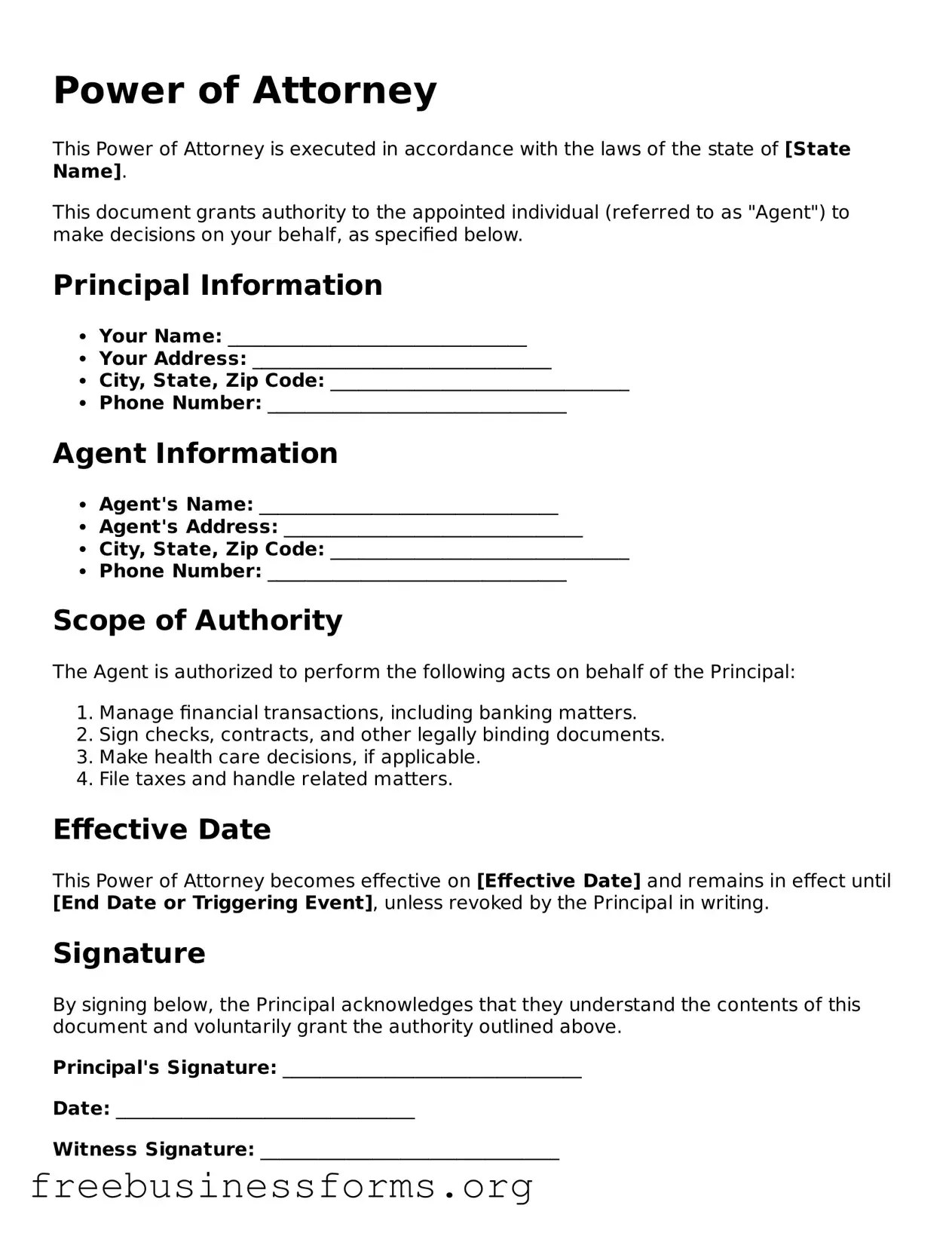Power of Attorney
This Power of Attorney is executed in accordance with the laws of the state of [State Name].
This document grants authority to the appointed individual (referred to as "Agent") to make decisions on your behalf, as specified below.
Principal Information
- Your Name: ________________________________
- Your Address: ________________________________
- City, State, Zip Code: ________________________________
- Phone Number: ________________________________
Agent Information
- Agent's Name: ________________________________
- Agent's Address: ________________________________
- City, State, Zip Code: ________________________________
- Phone Number: ________________________________
Scope of Authority
The Agent is authorized to perform the following acts on behalf of the Principal:
- Manage financial transactions, including banking matters.
- Sign checks, contracts, and other legally binding documents.
- Make health care decisions, if applicable.
- File taxes and handle related matters.
Effective Date
This Power of Attorney becomes effective on [Effective Date] and remains in effect until [End Date or Triggering Event], unless revoked by the Principal in writing.
Signature
By signing below, the Principal acknowledges that they understand the contents of this document and voluntarily grant the authority outlined above.
Principal's Signature: ________________________________
Date: ________________________________
Witness Signature: ________________________________
Date: ________________________________
Notary Public (if applicable): ________________________________
Date: ________________________________
